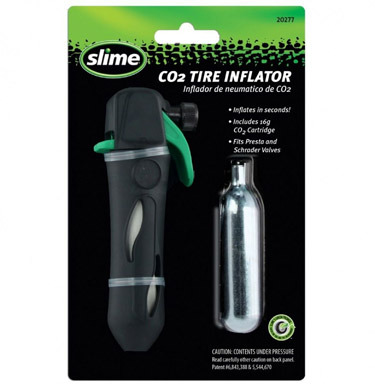Different types of flat tires call for different ways to fix them, depending on the situation you're in, the severity of the damage, and the price. If you get a small puncture and not a full blowout, a can of aerosol tire sealant can come in handy — just attach the hose on the product to your tire's valve stem, empty the can's contents into the tire, and keep on driving.
Keeping sealant on hand may offer a quick fix to get your car up and running again. But using it can have drawbacks if you're concerned about tire and road safety. Many automotive brands produce their own tire sealants, so before plunking down some cash for a can, weigh the tire sealant pros and cons.
It's a fast, convenient, and affordable DIY solution.
Many tire sealants — think products like Fix-A-Flat or Slime — come in a pressurized can and are easy to apply. When you spray the product into the valve, the tire inflates and the formula coats the inside of the tire, plugging leaks or punctures. Within a few minutes, you can start driving your car so the gel spreads evenly.
Even with more major flats, a good sealant will fill up your tires enough to drive the car a short distance, like to the side of the road. That way, you can get out of the way of dangerous traffic and reduce the risk of harm to you, your passengers, or your wheels. It's a safe option if you don't have a spare tire. Sealant is readily sold in automotive and retail stores, and it's cheap and long-lasting.
Tire sealant may prevent flat tires.
Sealants are most associated with fixing tire punctures, but using them for preventing flat tires is often overlooked, according to Marc Lapointe, general manager of Seaway Hyundai in Ontario, Canada.
"Preventative tire sealants are particularly helpful if you live in a more rural area where there is a lot of gravel or rocks, or if you tend to be around job sites, where nails and screws routinely find their way onto the road and driveways," he says. "Using a preventative tire sealant is an easy and affordable way to give the tire an extra layer of protection and help prevent potential punctures that would cost you more money down the road."
"Using a preventative tire sealant is an easy and affordable way to give the tire an extra layer of protection and help prevent potential punctures that would cost you more money down the road."
Sealant may prolong the life of old tires.
Tire sealant doesn't need to be applied only in the event of a flat tire. Jim Wang of Wallet Hacks says that he uses sealant to fill in age- and wear-related cracks in the tires of his farm equipment — a lawn mower, tractor, and wheelbarrow — to keep the items running longer. "The tires themselves are relatively old, have to withstand some rough conditions and so they develop little cracks," Wang says. "A jug of sealant is less than $50, and if it can get a few more years of life out of $500 tires, it's worth it by a long shot."
Tire sealant may damage — rather than fix — your tires.
It may be simple to use, but when applied incorrectly, tire sealant may further ruin your tire. Sealant is designed to disperse and fill up puncture holes while aided by the heat of the tire. If it doesn't warm up fast enough, it can pool toward the bottom of the tire and lead to potential wheel misalignment. Tire sealant may also damage the sensors inside your tire, keeping the pressure constant and failing to alert the driver inside the car if the tire pressure was to actually become low.
If it doesn't warm up fast enough, it can pool toward the bottom of the tire and lead to potential wheel misalignment. Tire sealant may also damage the sensors inside your tire, keeping the pressure constant and failing to alert the driver inside the car if the tire pressure was to actually become low.
It's not a permanent fix for a flat tire.
Leaky tire sealant has been known to corrode wheels, which can be costly to replace. Plus, no tire sealant is a permanent solution. In fact, you may need to buy a new tire to replace your flat because many service centers won't repair a tire treated with a chemical sealant.
Sealants may contain hazardous chemicals, and removing sealant may be time-consuming for a repair person. Using a canned sealant can increase the pressure inside the tire, too, risking a blowout or injury to the person who's repairing the tire. Sealants may also void your tire's warranty, so that replacement tire will end up costing full price.
Think of tire sealant as an alternative to the spare tire.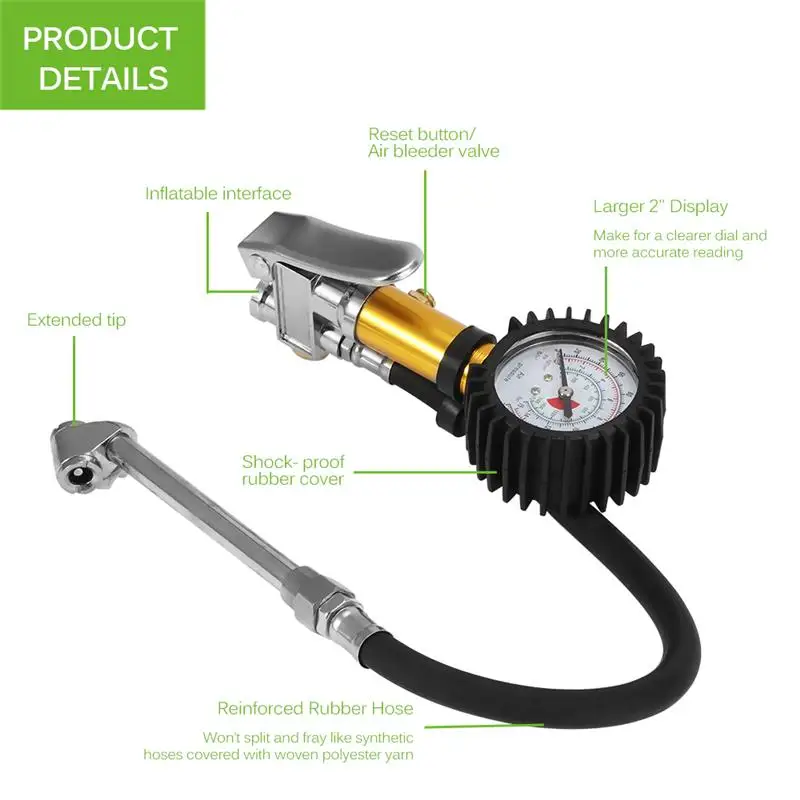 Only use it in emergency situations, and drive on a sealed tire just to take it to get repaired or replaced. According to CarsDirect, take the precautions when applying sealant that you would when changing a tire, such as ensuring that your car is safely on the curb or shoulder of the road. Depending on the size of your car, SUV, or truck, keep a larger can or multiple cans of sealant in the trunk. Exercise caution when using the applicator, can, and tire inflator, and don't over-apply. Of course, if you've been in a more serious auto collision, prioritize your safety over fixing a tire.
Only use it in emergency situations, and drive on a sealed tire just to take it to get repaired or replaced. According to CarsDirect, take the precautions when applying sealant that you would when changing a tire, such as ensuring that your car is safely on the curb or shoulder of the road. Depending on the size of your car, SUV, or truck, keep a larger can or multiple cans of sealant in the trunk. Exercise caution when using the applicator, can, and tire inflator, and don't over-apply. Of course, if you've been in a more serious auto collision, prioritize your safety over fixing a tire.
Get stories that
empower and uplift daily.
By signing up, you agree to our Privacy Policy.
Already a subscriber? Log in to hide ads.
We say yes, since a can of sealant from a reputable auto parts store costs only $5 or $10 and can last months, or even years, when used minimally. For minor puncture holes caught in time, less sealant can mean more and extend the life of the product, and possibly prevent you from plunking down money for a new tire.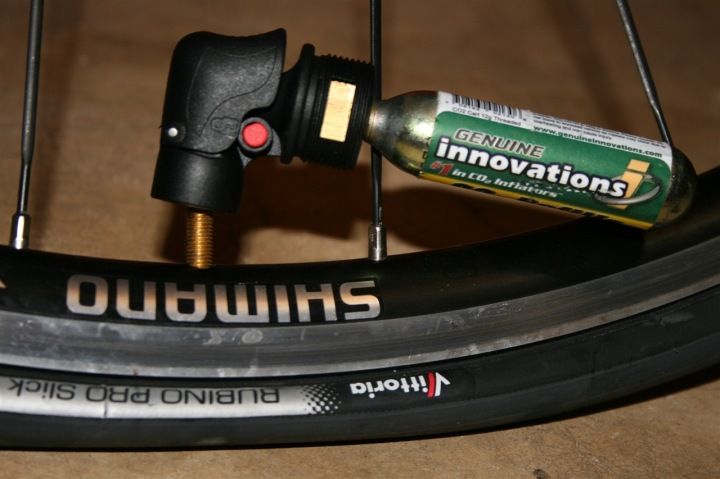 We would still recommend carrying a spare tire in your trunk, as sealant should be a temporary fix before a flat tire becomes a serious problem.
We would still recommend carrying a spare tire in your trunk, as sealant should be a temporary fix before a flat tire becomes a serious problem.
This article first appeared at Dealnews.com.
Maintaining the tire pressure on your vehicle is helpful to achieving optimal fuel mileage and keeping the treadwear even. It's important to check your tires often to maintain driving safety because low tire pressure could lead to an accident, flat tire, or a blowout. With a cordless tire inflator, you can check your tire pressure at home and refill the air in your tires.
List of Top Air Compressors to Inflate Tires
$30 at Amazon
Now 21% Off
$50 at Amazon
Now 27% Off
$66 at Amazon
Cordless tire inflators are a type of air compressor that operates on an alternate power source instead of electricity.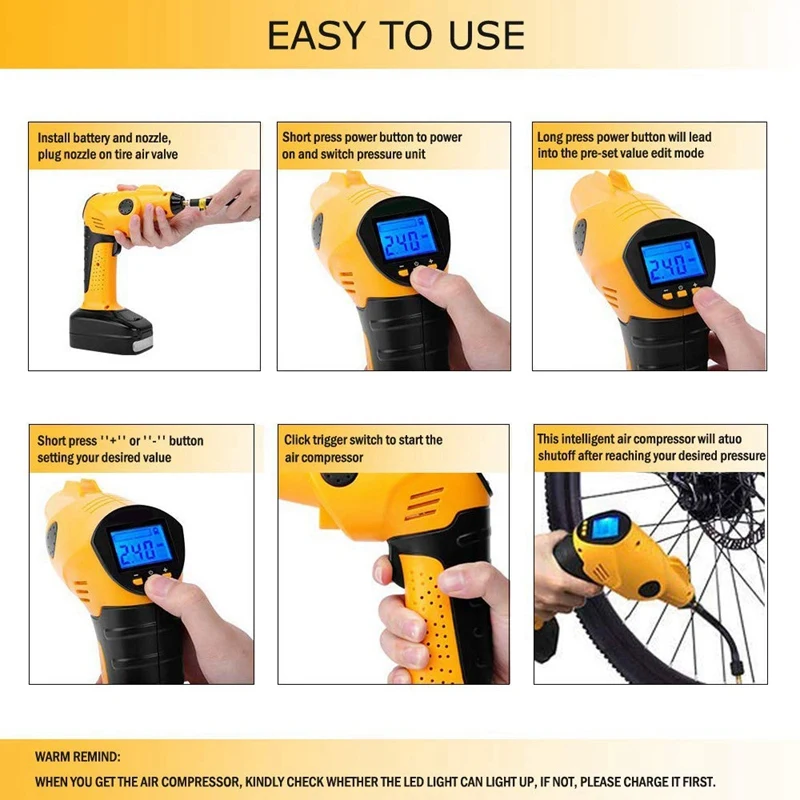 For example, your vehicle or a battery can power some types of air compressors. These look like small tool kits and their primary use is to add air into tires. Since cordless tire inflators are small and have battery power, they're portable, which is great for home use or in cases of emergency on the road. Cordless tire inflators can inflate other items such as an air mattress, pool flotations, or bike tires.
For example, your vehicle or a battery can power some types of air compressors. These look like small tool kits and their primary use is to add air into tires. Since cordless tire inflators are small and have battery power, they're portable, which is great for home use or in cases of emergency on the road. Cordless tire inflators can inflate other items such as an air mattress, pool flotations, or bike tires.
Here are some benefits to consider about having a cordless tire inflator:
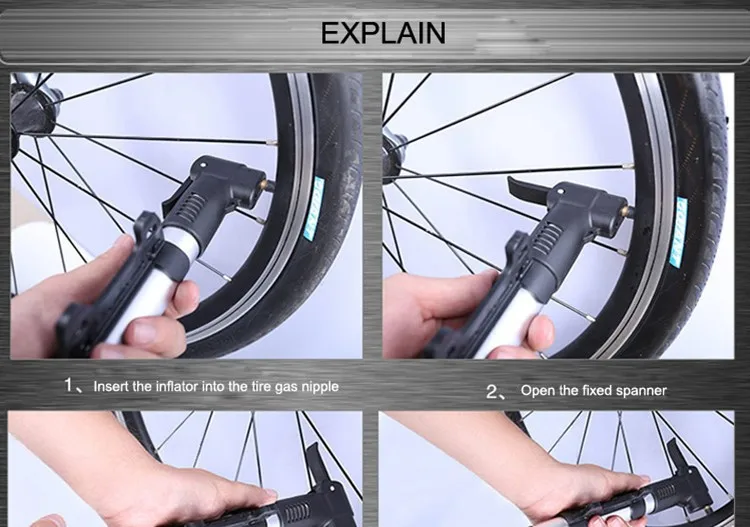 Low pressure also causes the tread of your tires to wear unevenly, which may lead to hydroplaning. Keeping your tires properly inflated extends the life of the tire and helps increase fuel efficiency.
Low pressure also causes the tread of your tires to wear unevenly, which may lead to hydroplaning. Keeping your tires properly inflated extends the life of the tire and helps increase fuel efficiency. Try to check your tire pressure before traveling and take notice of the dashboard signals to notify you of low tire pressure.
There are a wide variety of cordless tire inflators for consumers to choose from depending on their budget and needs. Here are some products to consider:
The AstroAI Portable Air Compressor Pump is great for a small budget and you can keep it in your car for emergencies. The AstroAI portable air compressor pump uses the power from your car rather than a battery, which is a benefit because you don't need to charge or replace the battery. Another great feature of this tool is that it can give an accurate reading of your tire pressure before and after you inflate.
To use, turn on your vehicle and plug the air compressor into a cigarette lighter. The pump inflates tires quickly, at 35 liters per minute. You need 10 to 15 amps for this tool to operate, so it's important to check the current of your automobile cigarette lighter before purchasing.
The GSPSCN Tire Inflator Heavy Duty Double is versatile and you can use it for small vehicles as well as larger ones, such as SUVs, trucks, and RVs. It has a double-cylinder motor which gives more inflation power and allows you to inflate a standard vehicle tire in as little as a minute. The heavy-duty design and rubber feet give the compressor stability while in use.
To inflate your tires, connect the clamps to the vehicle's battery and connect the hose to the tire. There is also an option to use a 12v socket to power this air compressor.
The AVID POWER Tire Inflator Air Compressor is a multi-purpose cordless tire inflator that uses battery power.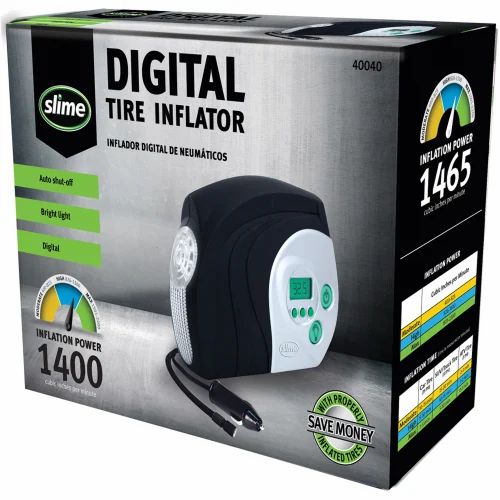 You can use this for car, motorcycle, and bike tires, as well as pool inflatables and balls. It has an automatic stop button that helps you to set a value of air pressure and the device stops once it inflates to the desired air pressure. This prevents over-inflating your tires. This also comes with a dual power-supply option, so if the battery runs low while traveling you can use the vehicle cigarette lighter.
You can use this for car, motorcycle, and bike tires, as well as pool inflatables and balls. It has an automatic stop button that helps you to set a value of air pressure and the device stops once it inflates to the desired air pressure. This prevents over-inflating your tires. This also comes with a dual power-supply option, so if the battery runs low while traveling you can use the vehicle cigarette lighter.
When choosing which cordless tire inflator to buy, consider the following:
 You might also check the current of your cigarette lighter since many cordless tire inflators hook up to these in order to give the device power to inflate.
You might also check the current of your cigarette lighter since many cordless tire inflators hook up to these in order to give the device power to inflate. Hearst Autos Research, produced independently of the Car and Driver editorial staff, provides articles about cars and the automotive industry to help readers make informed purchasing choices.
tire puncture fixing compound This question was asked by us, the specialists of the expert group “A Few Distrustful Guys”, which deals with consumer tests of automotive components. We decided to find the answer by conducting comparative tests of several samples of sealants in conditions close to reality.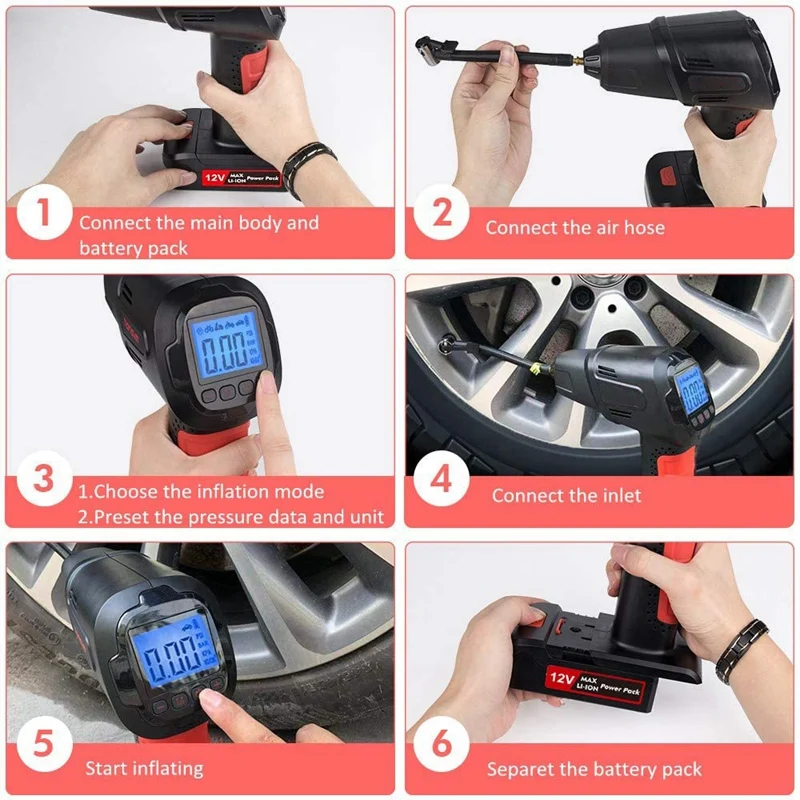
The question of how efficient and easy to use aerosol compositions for the "treatment" of punctures is by no means an idle one. More and more automakers are depriving new models of their cars not only of a full-size spare tire, but also of the so-called “roll-up”. And in a niche at the bottom of the trunk, only a compressor and a spray can with a special tool for eliminating punctures are placed. But even those whose car is equipped with a fifth wheel will surely remember more than one case from their practice when one of the wheels was punctured and replaced with a spare one. The further way in this case passes in a very nervous situation with the idea that God forbid not to pierce another wheel, because there will be nothing to replace it. And it’s good if in such a situation the tire service is close ... But what if, as they say, go and go before it? Perhaps for those who often travel far from civilization, it is still worth having a can of sealant in the trunk? Will he make a hole? nine0003
St. Petersburg agreed to help us conduct comparative tests. The Tire Plus Tire Center specialists on Petrovsky Island provided us with the required number of brand new identical tires of 175 / 65R14 dimensions and tire fitting equipment at our disposal. The condition that the tires must be the same size and new, we initially set when looking for an opportunity to conduct this test. Indeed, only in this case, the conditions of the comparative test will be as correct and reproducible as possible for all tested samples. After all, in tires of different dimensions, the sealant will spread differently and in a large tire the composition will simply spread through its depths and get to the puncture site in a smaller amount than in a small wheel. A big difference in the age of the wheels can also affect. After all, the rubber of the inner surface of the old tire is inevitably dotted with a network of microcracks. And on such a surface, the sealant will flow in a completely different way than in a completely new wheel.
Petersburg agreed to help us conduct comparative tests. The Tire Plus Tire Center specialists on Petrovsky Island provided us with the required number of brand new identical tires of 175 / 65R14 dimensions and tire fitting equipment at our disposal. The condition that the tires must be the same size and new, we initially set when looking for an opportunity to conduct this test. Indeed, only in this case, the conditions of the comparative test will be as correct and reproducible as possible for all tested samples. After all, in tires of different dimensions, the sealant will spread differently and in a large tire the composition will simply spread through its depths and get to the puncture site in a smaller amount than in a small wheel. A big difference in the age of the wheels can also affect. After all, the rubber of the inner surface of the old tire is inevitably dotted with a network of microcracks. And on such a surface, the sealant will flow in a completely different way than in a completely new wheel. nine0003
nine0003
So, the platform for correct comparative tests is prepared. And we went to buy samples. Let's not hide our disappointment. We expected to find and compare at least 7-8 samples of sealants. But what was our surprise when, in several dozen stores in Moscow and St. Petersburg, cylinders with sealants from the same manufacturers appeared before our eyes. The most common were formulations from Abro, Hi-Gear, Holts and Liqui Moly. We bought them. And quite unexpectedly, these well-known brands were accompanied by Auchan sealant, which we bought in the supermarket of the same name. nine0003
The test program we developed for these 5 samples was quite simple. On the opposite side of the tread from the valve, a puncture is made with a diameter of 6 millimeters, which we will try to eliminate by introducing sealant into the bowels of the wheel. The most remote point of the wheel is chosen in order to complicate the task of conveying the sealant composition to the puncture as much as possible. Wheel repair will be done in strict accordance with the instructions on the cylinder. Well, we will observe whether the composition is able to close the puncture hole. We will also measure the pressure that gases pumped into a cylinder with sealant in a punctured wheel will create, despite the fact that immediately after the puncture, the pressure in it will be brought to zero. Well, at the end of the test, those wheels that stop the air leak will be checked for imbalance, on the basis of which a conclusion will be made as to whether it is possible to continue normal movement on them. nine0003
Wheel repair will be done in strict accordance with the instructions on the cylinder. Well, we will observe whether the composition is able to close the puncture hole. We will also measure the pressure that gases pumped into a cylinder with sealant in a punctured wheel will create, despite the fact that immediately after the puncture, the pressure in it will be brought to zero. Well, at the end of the test, those wheels that stop the air leak will be checked for imbalance, on the basis of which a conclusion will be made as to whether it is possible to continue normal movement on them. nine0003
By the way, it is immediately worth noting the fact that all manufacturers give different recommendations on the position of the punctured wheel in which it is necessary to make a saving composition. Abro's instructions say to position the valve between 5 and 7 o'clock on the dial. Holts suggests raising it to the 10 to 2 hour range. In the instructions for Hi-Gear and Auchan, there is not a word about this at all. And the Liqui Moly instruction seemed to us the most thoughtful in this regard, in which it is advised to orient the wheel so that the puncture in it is at the bottom of the wheel. It is logical, because in this case, the composition, hitting the tire, will most quickly get to the puncture site and “set to work”. nine0003
And the Liqui Moly instruction seemed to us the most thoughtful in this regard, in which it is advised to orient the wheel so that the puncture in it is at the bottom of the wheel. It is logical, because in this case, the composition, hitting the tire, will most quickly get to the puncture site and “set to work”. nine0003
But further in the instructions, a complete bacchanalia begins. And we have the opinion that all this confusion is the result of too free, and sometimes absolutely superficial translations of instructions. We advise all manufacturers to be more thoughtful and attentive to this procedure. After all, the consumer's compliance with the recommendations of an illiterate translation at best will not give him any results, at worst, it will bring even more damage than it was before. Some manufacturers advise, as soon as sealant is poured into the wheel, immediately pump it up to the recommended pressure. Others are optimistic that a bottle of sealant will restore tire pressure if you let it all the way into the wheel. But in the case of a serious puncture, which we are going to simulate, both of these recommendations are essentially meaningless. After all, neither the compressor nor the excess pressure of the gases in the cylinder can create the required pressure in the tire. Air will freely leave the wheel through the hole that has not yet been closed. nine0003
But in the case of a serious puncture, which we are going to simulate, both of these recommendations are essentially meaningless. After all, neither the compressor nor the excess pressure of the gases in the cylinder can create the required pressure in the tire. Air will freely leave the wheel through the hole that has not yet been closed. nine0003
Read on. All sealant manufacturers recommend immediately after emptying the cylinder to start driving the car "at a moderate speed." The distance of the "repair" trip is offered different. Hi-Gear asks to drive 1-2 km, and Abro - 3. All other manufacturers are even more optimistic. In their opinion, on a tire that has just been filled with the contents of a sealant bottle, it is necessary to drive 10–15 km. The general meaning of the recommendations is clear. The composition of the sealant that has fallen into the wheel will spread through its bowels, the adhesive will be delivered to the puncture and seal it. And the excess sealing composition under the action of centrifugal force will be distributed as evenly as possible over the inner surface of the wheel, without causing its imbalance. nine0003
nine0003
That's right. That's just if on a tire, the pressure in which does not even reach the level of 1 atm, even drive a couple of kilometers, then its sidewalls will inevitably collapse. And the wheel will be unsuitable for further operation...
Therefore, for testing, we have developed the following algorithm of actions. The wheel is pierced and after the air pressure in it drops to zero, a sealant composition is introduced into it. Immediately after that, we fix how much air pressure in the wheel the gases of the sealant bottle were able to create. Then, if the pressure in the wheel is less than the norm of 2 atm, we pump it up and, on a car suspended on a lift, we simulate movement for a distance of 2 km at a speed of 40 km/h. After that, we will check whether the impermeability of the wheel has been restored and evaluate its imbalance. And based on these data, we will conclude whether the wheel is suitable for further full-fledged operation. So, five tires are assembled on disks and balanced. The wheel is installed on the car and a control puncture is made in it. The air whistles out of the tire, which quickly deflates completely and the rim of the disc touches the bearing surface. nine0003
The wheel is installed on the car and a control puncture is made in it. The air whistles out of the tire, which quickly deflates completely and the rim of the disc touches the bearing surface. nine0003
We sent the Hi-Gear train first. The foam composition rushed through a transparent tube into the wheel, which, during
minutes, while the cylinder was empty, noticeably rose from the floor. We measure the pressure. The pressure gauge shows 0.7 atm. This is clearly not enough for movement. In addition, the foam composition rapidly leaves the wheel through a puncture. After a couple of minutes of “driving” by car, it was heard that the air was still leaving the tire, but less and less actively. We remove the wheel and place it in a bath of water, where it immediately becomes clear that small air bubbles form at the puncture site. But just three minutes later, they disappeared. The wheel is sealed again! Is it possible to ride on it? Quite, as the test on the balancing machine showed. The wheel imbalance reached 20 grams - an acceptable indicator when driving at speeds up to 100 km / h. nine0003
The wheel imbalance reached 20 grams - an acceptable indicator when driving at speeds up to 100 km / h. nine0003
The composition of Liqui Moly was subjected to a second check. He was able to pump up the wheel only to the mark of 0.4 atm. However, this pressure is melting right before our eyes. The gas from the cylinder leaves the tire without any obstacles along with the working composition of the sealant. We pump up the wheel, “drive” 2 kilometers. And we get a result similar to the first sample - a small air leak, which was gradually eliminated by the composition thickening in the puncture within three to four minutes. The wheel only needs to be pumped up to working pressure and it is quite possible to go further on it! And, as it turned out, with any, even the highest speed. The imbalance was barely perceptible 10 grams. nine0003
The Holts, which came third in our test, we consider the most comfortable to use. It is equipped with a convenient valve that regulates the introduction of the sealant composition into the tire. A small rotary knob nullifies all problems - turn it and wait until the cylinder is empty. While for the remaining four cylinders, for one and a half to two minutes, you need to press and hold a fairly tight key on its cover with your finger. The task, frankly, is for a strong male hand. Women's, if she copes with it, then not without prejudice to manicure. Holts also set an intermediate record for our test. He was able to inflate the wheel to 0.9atm. The pressure, of course, is low, but in case of emergency, for example, if the compressor is out of order, you can drive several kilometers at extremely low speed on such a wheel. And then came the disappointment. When simulating a two-kilometer race, the sealant foam left the wheel so actively through a puncture that the entire wheel niche of our aggregate carrier was soiled with it. The tire actively poisoned the air with foam even after the car stopped. And only about ten minutes later, when we were about to remove this sample for further testing, the air leak stopped.
A small rotary knob nullifies all problems - turn it and wait until the cylinder is empty. While for the remaining four cylinders, for one and a half to two minutes, you need to press and hold a fairly tight key on its cover with your finger. The task, frankly, is for a strong male hand. Women's, if she copes with it, then not without prejudice to manicure. Holts also set an intermediate record for our test. He was able to inflate the wheel to 0.9atm. The pressure, of course, is low, but in case of emergency, for example, if the compressor is out of order, you can drive several kilometers at extremely low speed on such a wheel. And then came the disappointment. When simulating a two-kilometer race, the sealant foam left the wheel so actively through a puncture that the entire wheel niche of our aggregate carrier was soiled with it. The tire actively poisoned the air with foam even after the car stopped. And only about ten minutes later, when we were about to remove this sample for further testing, the air leak stopped.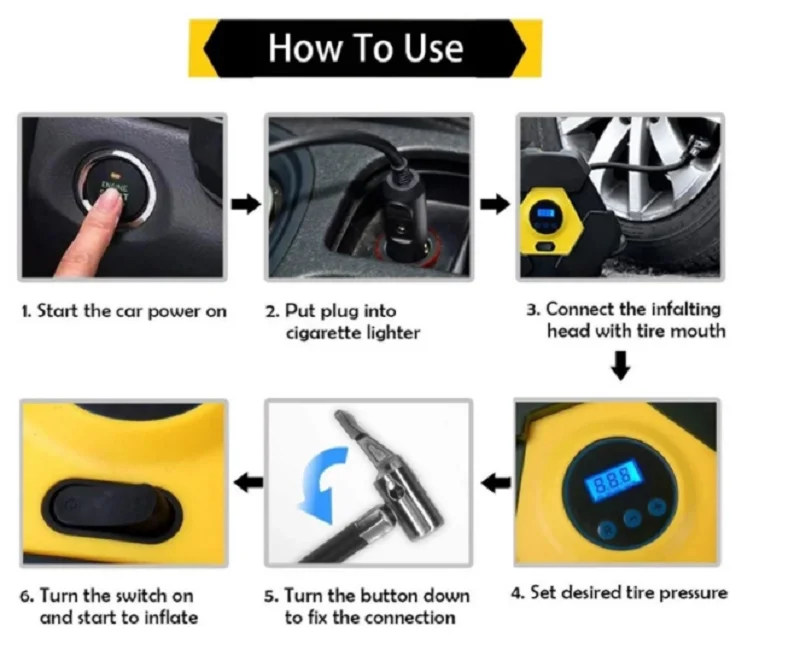 However, the disqualification still followed. The wheel imbalance was completely unacceptable and amounted to 75 grams! Another record of our test. Alas, with a minus sign. With such an imbalance, the movement can only be continued until the nearest tire service. And even then at a speed of no higher than 50–60 km / h. Otherwise, the repair of the suspension and steering mechanism cannot be avoided ...
However, the disqualification still followed. The wheel imbalance was completely unacceptable and amounted to 75 grams! Another record of our test. Alas, with a minus sign. With such an imbalance, the movement can only be continued until the nearest tire service. And even then at a speed of no higher than 50–60 km / h. Otherwise, the repair of the suspension and steering mechanism cannot be avoided ...
Auchan's sealant was also an unpleasant surprise. The fact is that the remnants of the composition inevitably fall on the hands when unscrewing the hose from the wheel valve after the cylinder is empty. But if in all samples the sealant that got on the hand was easily washed off with water, then the foam of the Auchan sample turned out to be so sticky that it was possible to wash it off with great difficulty. There is only one conclusion - wear gloves ... Auchan raised the pressure in the wheel only to 0.6 atm. A thickened in the puncture hole and eliminated the air leak as slowly and reluctantly as the previous sample. When, finally, the foam sealed the puncture, it turned out that the wheel imbalance was also unacceptable for normal further operation - 65 grams. nine0003
When, finally, the foam sealed the puncture, it turned out that the wheel imbalance was also unacceptable for normal further operation - 65 grams. nine0003
Vasily Gavrilov, shift foreman at Petrovsky tire center Tire Plus:
“I am skeptical about such bottles with sealants. In the event of a serious puncture or cut of the wheel, as well as damage to the sidewall, they will be absolutely useless. But with minor punctures, such a spray can quite help. Of the samples that we tested, I recommend Liqui Moly - he quickly sealed the puncture and there was no subsequent imbalance of the wheel. This tool can be carried with you in the trunk. The Hi-Gear did a great job with the puncture and the imbalance was small. But, as it turned out, he is afraid of frost and freezes very quickly. On such a wheel in the winter you will not go far. Holts and Auchan compounds can also seal a puncture. But with such an imbalance, the maximum that the wheel that was repaired with these sealants is capable of in the future is to allow it to slowly reach civilization and already there at the tire shop to do a full-fledged wheel repair. In general, I advise everyone to have a set of repair harnesses in the car. They are very easy and convenient to use. In addition, unlike liquid sealants, they can close a puncture in the sidewall. Well, anyone who held a screwdriver or a wrench in their hands can cope with these harnesses. nine0003
In general, I advise everyone to have a set of repair harnesses in the car. They are very easy and convenient to use. In addition, unlike liquid sealants, they can close a puncture in the sidewall. Well, anyone who held a screwdriver or a wrench in their hands can cope with these harnesses. nine0003
Well, the fifth sample - Abro - we removed from the race. He was never able to stop the air leak from the wheel. During the “arrival” and within a few minutes after it, almost the entire sealing composition was “expelled” from the tire through a puncture.
So, two samples - Hi-Gear and Liqui Moly - coped with the task. The large 6 mm puncture is successfully sealed, the imbalance is quite acceptable. But ... Why, in the instructions on the cylinders, manufacturers recommend using these compounds only when heated, warming them up in winter, for example, with a stove in the car. How will they behave in the cold? Let's check! Benefit on the street minus 20. Both contenders for victory in our test on the street! The result shocked us. Hi-Gear began to thicken instantly and froze within 15 minutes. We did not spoil one of the balancing machines of the Petrovsky Tire Center. And so it was clear that the imbalance would be prohibitive. On the wheel, inside of which such a huge clot of ice has appeared, it will simply not be possible to drive higher than the first gear - the suspension will instantly break. nine0003
Hi-Gear began to thicken instantly and froze within 15 minutes. We did not spoil one of the balancing machines of the Petrovsky Tire Center. And so it was clear that the imbalance would be prohibitive. On the wheel, inside of which such a huge clot of ice has appeared, it will simply not be possible to drive higher than the first gear - the suspension will instantly break. nine0003
We recognize Liqui Moly as the winner of our test. We recommend carrying a can of this sealant in the trunk just in case, even if there is a spare wheel. In the case of a small puncture, Liqui Moly will allow you to do without the cumbersome wheel change procedure and, in principle, a subsequent visit to the tire shop. Although the Germans at the end of the instructions on the cylinder honestly ask "do not forget to repair the tire in a qualified manner in the workshop."
Tell friends:
tell VKontakte tell in classmates
or
Comment
02 May 2022
07, 2021 9005 "For any weather and roads for any weather and road "
April 10, 2021
January 03, 2021
03 November 2020
08 October 2020
 .."
.." 03, 2020
drivers in prevention. from trips on flying tires
Monday was already marked by a weather collapse - snow and rain, as well as morning sleet have already led to several accidents on the roads. As a result, the traffic police and the traffic police issued an operational warning about changing tires October 31, 2022 0
Michelin leaves Russia
Tire concern Michelin has decided to transfer Russian assets to the current local management. The deal will be completed before the end of this year June 28, 2022 0
Old tires have been put to good use
Ecologists have repeatedly said that stocks of old rubber are increasing to critical levels, which negatively affects the environment. However, scientists have found a worthy use for tires 26 May 2022 0
Russia is facing a shortage of tires
Downtime of tire factories caused by coronavirus outbreaks will lead to a shortage of the above product August 30, 2021 0
Driver, take care of your wheels!
Tiktok-poisoned young people have a new pastime - twisting valve caps off cars. The question is why would they? June 24, 2021 0
The question is why would they? June 24, 2021 0
The Ministry of Internal Affairs denied the introduction of a fine for the wrong tires
For several weeks, information has leaked into the network that, with the beginning of summer, inspectors will begin to fine people for using tires out of season. April 14, 2021 0
Rubber manufacturers start producing old tires
We have already said that manufacturers are slowly starting to revive their iconic old models and support them with the production of components. Now, manufacturers of spare parts, namely tires, are also starting to pay tribute to history 11 March 2021 0
Tires will soon rise in price
In Russia, the law on mandatory labeling of car tires has come into force, but more than 90% of retailers still do not have it tires. At the same time, from December 15, the circulation of “unmarked” tires will be completely prohibited November 16, 2020 0
Leave a comment
CO2 pumps are an extremely convenient way to inflate tires. The small canister contains compressed carbon dioxide, which is fed into the chamber. This is a quick way to get back on track after a flat tire.
Our guide below will describe what we think is the best way to install and use a CO2 pump.
Make sure there are no sharp objects in the tire. Check that the tube does not come out of the tire bead. With a simple pump, you can see the leaking chamber in time, with a CO2 cylinder, there is a chance that the chamber will burst if installed incorrectly. It takes about 2 minutes to get to work0003
It is important that the valve is in the open position. If you install the pump in a closed container, you will waste the cartridge. As an option, store the chambers with an open nipple.
Briefly press the nipple to release some air. Thus, you will purge the nipple from possible particles of sand and dirt. nine0003
Most pumps are similar in design. They usually have an on/off trigger for air supply. In the open position of the trigger, you bleed all the air from the cylinder when docking it with the pump.
Pump and cartridge are threaded.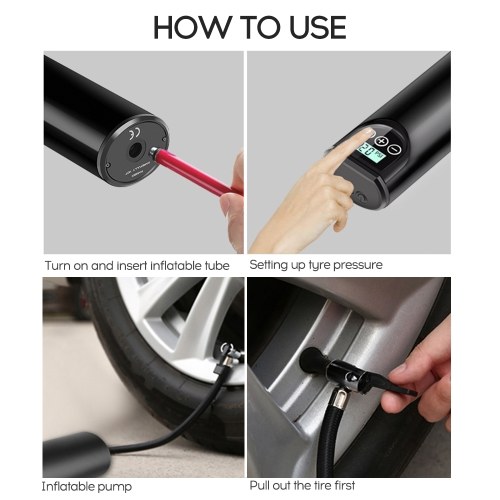 Some pumps allow you to store the cartridge for a long time, thereby remaining at the ready. You release the safety, then pull the trigger to release the gas. When storing the pump together with the cylinder, do not forget - there is a risk of accidental opening. nine0003
Some pumps allow you to store the cartridge for a long time, thereby remaining at the ready. You release the safety, then pull the trigger to release the gas. When storing the pump together with the cylinder, do not forget - there is a risk of accidental opening. nine0003
Continue to screw the bottle into the pump. Inside the threaded hole of the pump is a small tube with a pointed end. This tube will pierce the end of the CO2 cartridge. As soon as the needle pierces the balloon, the gas will rush into the pump.
Then fit the pump firmly into the nipple. Make sure the valve is tight.
While holding the pump head on the nipple, open the valve using the trigger. The air supply will be very abrupt, perhaps with a pop. The cylinder can cool down quickly - it is better to use gloves.
The cylinder can cool down quickly - it is better to use gloves.
When the gas is applied, the tire will inflate sharply and sit in the rim with a loud click. It is best to use all the air in the tank, and then bleed to the desired pressure.
